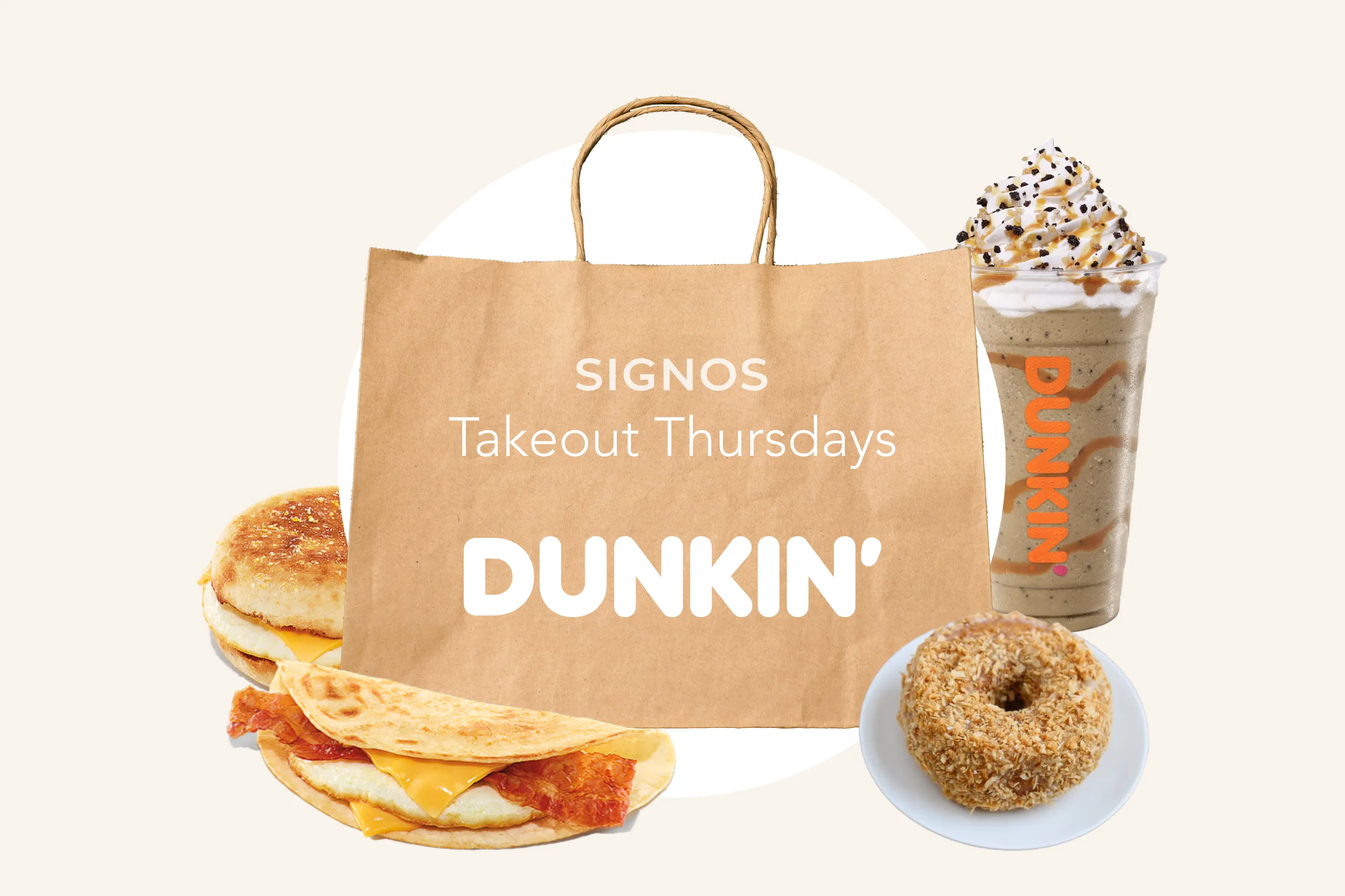With over 13,900 locations in the United States alone and a global presence spanning over 100 countries, McDonald's is one of the most recognizable fast-food chains worldwide. Despite its ubiquity, many health-conscious individuals hesitate to include McDonald's in their dining options due to concerns about its menu offerings, which are often characterized by ultra-processed foods high in calories, unhealthy fats, and added sugars. In this article, we'll explore how to make healthier choices at McDonald's with insights from a registered dietitian.
5 Foods to Order at McDonald’s
Choosing healthier options at McDonald's can be challenging, but with the right knowledge, it's possible to make more nutritious choices. Here are five foods to consider ordering, recommended by a dietitian, to help you navigate the menu with confidence and satisfaction.
1. Fruit & Maple Oatmeal
- Calories: 290
- Fat: 4.5g
- Sodium: 140mg
- Carbs: 57g
- Fiber: 5g
- Sugars: 32g
- Protein: 5g
Benefits: Made from whole grain oats, this dish provides 5 grams of fiber, which aids in digestion, helps you feel full longer, and can help regulate blood sugar levels. The dish also includes diced apples, dried cranberries, and a raisin blend, providing essential vitamins, minerals, and antioxidants. However, it is high in sugar, so you may opt to only eat a portion of this dish to minimize blood sugar spikes or go for a walk right after eating this breakfast item.
Average Glucose Spike: 41 mg/dL
2. Egg McMuffin

- Calories: 300
- Fat: 13g
- Sodium: 730mg
- Carbs: 30g
- Fiber: 2g
- Sugars: 3g
- Protein: 17g
Benefits: The Egg McMuffin from McDonald's can be considered a relatively nutritious choice compared to some other items on the menu. With 300 calories and 17 grams of protein, it can be a reasonable option for a meal, especially for breakfast.
Average Glucose Spike: 53 mg/dL
3. 10-Piece Chicken McNuggets
- Calories: 440
- Fat: 27g
- Sodium: 870mg
- Carbs: 30g
- Fiber: 2g
- Sugars: 0g
- Protein: 22g
Benefits: This meal provides a significant amount of protein, which is important for helping you feel full and satisfied. With 440 calories for a 10-piece serving, the Chicken McNuggets can be a reasonable option for a meal, especially when compared to larger sandwiches or meals that can exceed 700 calories or more.
Average Glucose Spike: 23 mg/dL
4. Hamburger
- Calories: 250
- Fat: 9g
- Sodium: 480mg
- Carbs: 31g
- Fiber: 1g
- Sugar: 6g
- Protein: 13g
Benefits: A McDonald’s hamburger provides a decent amount of protein and can be a satisfying meal when paired with a side salad or apple slices instead of fries. If you want to decrease the carb count and possible glucose spike, forgo the bun.
Average Glucose Spike: 39 mg/dL
5. Cheeseburger
- Calories: 300
- Fat: 13g
- Sodium: 680mg
- Carbs: 33g
- Fiber: 1g
- Sugars: 7g
- Protein: 15g
Benefits: With 15 grams of protein and only 300 calories, this can be a reasonable option for a meal, especially when paired with lower-calorie side options like a side salad or apple slices. Similar to the hamburger, you can make this a lower-carb option by forgoing the bun.
Average Glucose Spike: 33 mg/dL
5 Foods to Avoid
Here, we delve into five McDonald's menu items that a dietitian suggests avoiding due to their high levels of calories, unhealthy fats, sugars, and sodium. These items can contribute to weight gain and increase the risk of developing various health issues, including heart disease and diabetes. By being mindful of these choices, you can make more informed decisions about what to order for a healthier dining experience.
1. Big Breakfast With Hotcakes

- Calories: 1340
- Fat: 63g
- Sodium: 2070mg
- Carbs: 158g
- Fiber: 5g
- Sugars: 48g
- Protein: 36g
Average Glucose Spike: 72 mg/dL
This breakfast option is high in calories, fat, and sodium, which can contribute to weight gain and increase the risk of heart disease and high blood pressure. Research studies have linked high consumption of processed meats, such as sausage and bacon, to an increased risk of colorectal cancer and other health issues.1
If this is a favorite item, consider enjoying it occasionally as a treat rather than as a regular part of your diet. Alternatively, you could try making a healthier version at home using leaner meats and whole-grain pancakes.
2. Sausage Egg McMuffin

- Calories: 480
- Fat: 31g
- Sodium: 830mg
- Carbs: 30g
- Fiber: 2g
- Sugars: 2g
- Protein: 20g
Average Glucose Spike: 19 mg/dL
The Sausage Egg McMuffin is high in calories, with approximately 480 calories per serving. It is also high in fat, with about 31 grams of fat, of which 12 grams are saturated fat. Additionally, it contains a significant amount of sodium, with around 830 milligrams, contributing to daily sodium intake limits. Research studies have shown that consumption of processed meats leads to an increased risk of heart disease.2
If this is your favorite item, try removing the cheese or the sausage for a lower-calorie and lower-fat meal.
3. McDonald’s Big Mac

- Calories: 590
- Fat: 34g
- Sodium: 1050mg
- Carbs: 46g
- Fiber: 3g
- Sugars: 9g
- Protein: 25g
Average Glucose Spike: 31 mg/dL
This burger is high in calories, saturated fat, and sodium, which can contribute to weight gain and increase the risk of heart disease and high blood pressure. Research studies have linked high consumption of red and processed meats to an increased risk of heart disease, stroke, and certain types of cancer.3
If you crave a burger, consider opting for a smaller size or a grilled chicken sandwich instead. You could also try making a homemade burger using lean ground beef or turkey and whole grain buns.
4. Large French Fries

- Calories: 480
- Fat: 23g
- Sodium: 400mg
- Carbs: 65g
- Fiber: 6g
- Sugars: 0g
- Protein: 7g
Average Glucose Spike: 49 mg/dL
McDonald’s fries are high in calories, unhealthy fats, and sodium, which can contribute to weight gain and increase the risk of heart disease and high blood pressure. Research studies have shown that high consumption of fried foods is associated with an increased risk of obesity, type 2 diabetes, and other health issues.4
If you love French fries, consider ordering a smaller size or sharing them with a friend. As a healthier alternative, you could also try making oven-baked fries at home using sweet potatoes or regular potatoes.
5. Chocolate Shake
- Serving Size: Large
- Calories: 800
- Fat: 20g
- Sodium: 390mg
- Carbs: 134g
- Fiber: 1g
- Sugars: 106g
- Protein: 18g
Average Glucose Spike: 67 mg/dL
The chocolate shake is high in calories, sugars, and saturated fat, which can contribute to weight gain and increase the risk of developing type 2 diabetes and other health issues. Research studies have linked high consumption of sugary drinks to an increased risk of obesity, heart disease, and other chronic conditions.5
If you enjoy a chocolate shake, consider opting for a smaller size or sharing it with a friend. You could also try making a healthier version at home using low-fat milk and unsweetened cocoa powder.
McDonald’s Big Mac Copycat Recipe
Craving a Big Mac but eating on a budget or looking for a homemade swap? Below is a dietitian-approved copycat recipe that is sure to fulfill your cravings and help you stay on track with your health goals.
Ingredients:
- 1 whole wheat hamburger bun
- 1 lean beef burger patty
- 1 slice of reduced-fat cheddar cheese
- Shredded lettuce
- Sliced pickles
- Minced onion
- Special sauce (mix light mayo, mustard, relish, and a dash of vinegar)
Instructions:
- Grill or cook the burger patty until fully cooked.
- Toast the whole wheat bun.
- Assemble the burger: Place the burger patty on the bottom bun, add the slice of cheese, shredded lettuce, sliced pickles, and minced onion.
- Spread the special sauce on the top bun.
- Place the top bun on the assembled burger to complete the Big Mac.
A homemade Big Mac is healthier than a McDonald's one because it allows for better control over ingredients and portion sizes. Using whole wheat buns, lean beef, reduced-fat cheese, and homemade sauce can significantly reduce the calorie, fat, and sodium content compared to the fast-food version. Additionally, homemade versions can be customized to include more vegetables and fewer processed ingredients, making them a more nutritious choice overall.
A Quick Review
Including McDonald's in a healthy weekly routine is possible with a few smart choices:
- Opt for Smaller Portions: Choose smaller sandwiches or burgers instead of larger ones to reduce calorie intake.
- Choose Grilled Over Fried: Select grilled chicken options instead of fried chicken to lower fat content.
- Swap Sides: Choose apple slices, a side salad, or a yogurt parfait instead of fries to add more nutrients and fiber to your meal.
- Customize Your Order: To reduce fat and calorie content, ask for no cheese or sauce or request extra lettuce and tomato for added fiber and vitamins.
- Watch Your Beverages: Choose water, unsweetened tea, or diet sodas instead of sugary drinks to reduce calorie and sugar intake.
Using a CGM with Signos: Real-Time Data, Backed by AI
Signos pairs a real-time glucose biosensor with AI trained on tens of millions of data points to deliver personalized, science-backed guidance for weight management and health. See exactly how your body responds, and take action.
Learn how it works. Ready to get started? Join now.
Topics discussed in this article:
References
- Iqbal R, Dehghan M, Mente A, Rangajaran S, Wielgosz A, Avezum A, Seron P, AlHabib KF, Lopez-Jaramillo P, Swaminathan S, et al. Associations of unprocessed and processed meat intake with mortality and cardiovascular disease in 21 countries [Prospective Urban Rural Epidemiology (PURE) Study]: a prospective cohort study. The American Journal of Clinical Nutrition, nqaa448, https://doi.org/10.1093/ajcn/nqaa448.
- Micha, R., Wallace, S. K., & Mozaffarian, D. (2010). Red and processed meat consumption and risk of incident coronary heart disease, stroke, and diabetes mellitus: a systematic review and meta-analysis. Circulation, 121(21), 2271–2283. https://doi.org/10.1161/CIRCULATIONAHA.109.924977
- Rohrmann, S., Overvad, K., Bueno-de-Mesquita, H. B., Jakobsen, M. U., Egeberg, R., Tjønneland, A., Nailler, L., Boutron-Ruault, M. C., Clavel-Chapelon, F., Krogh, V., Palli, D., Panico, S., Tumino, R., Ricceri, F., Bergmann, M. M., Boeing, H., Li, K., Kaaks, R., Khaw, K. T., Wareham, N. J., … Linseisen, J. (2013). Meat consumption and mortality--results from the European Prospective Investigation into Cancer and Nutrition. BMC medicine, 11, 63. https://doi.org/10.1186/1741-7015-11-63
- Iqbal M. P. (2014). Trans fatty acids - A risk factor for cardiovascular disease. Pakistan journal of medical sciences, 30(1), 194–197. https://doi.org/10.12669/pjms.301.4525
- Luger, M., Lafontan, M., Bes-Rastrollo, M., Winzer, E., Yumuk, V., & Farpour-Lambert, N. (2017). Sugar-Sweetened Beverages and Weight Gain in Children and Adults: A Systematic Review from 2013 to 2015 and a Comparison with Previous Studies. Obesity facts, 10(6), 674–693. https://doi.org/10.1159/000484566



.webp)
.svg)







.svg)
.svg)
.svg)
.svg)
.svg)
.svg)
.svg)
